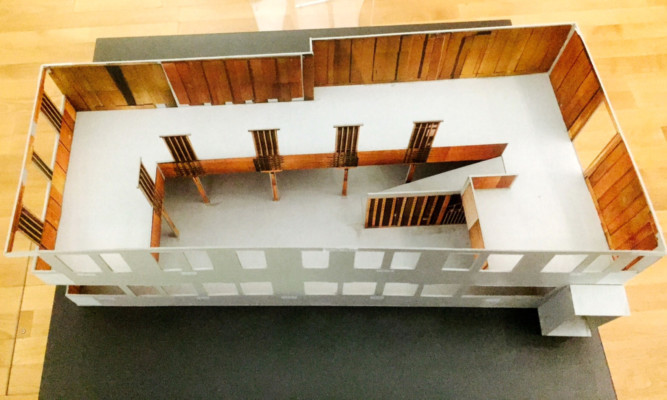A major Charles Rennie Mackintosh interior design unseen for almost half a century is the first confirmed exhibit at Dundee’s £80.1m V&A museum, the Courier can exclusively reveal.
The Oak Room – the largest Mackintosh interior for Miss Cranston’s Ingram Street Tearooms in Glasgow will be conserved, restored and displayed as part of a major collaborative project between Glasgow Museums and the V&A Dundee.
It will be unveiled as a centrepiece of V&A Dundee’s Scottish Design Galleries when the museum opens to the public in 2018 thanks to a long-term loan by Glasgow Life and grant funding from Heritage Lottery Fund Scotland.
Salvaged in advance of a hotel development in the 1970s and taken into Glasgow City Council’s museum collections, it is the first time all 600 surviving pieces of the interior will be reassembled and put on public display.
Philip Long, Director of V&A Dundee, said: “V&A Dundee will celebrate the best of Scottish and international design creativity. When we set about planning the Scottish Design Galleries for V&A Dundee it was vital Mackintosh, recognised around the world as one of the great and most influential of designers, was represented appropriately. It is extremely fitting that the public will be able to see such a major work by him at the heart of that story.
“We are delighted to work jointly with Glasgow Life on the conservation and restoration of this important historic interior and to draw on their extensive Mackintosh expertise.”
At 13.5 metres long, the Oak Room is described as ‘the sleeping giant’ of the Ingram Street tearoom. Staff from Glasgow Museums and the V&A Dundee will work together on the conservation and reconstruction project.
The double-height Oak Room, designed by Mackintosh in 1907 and completed in 1908, is acknowledged as an important interior that would inform his design ideas for the Glasgow School of Art Library, which was completed a year later in 1909.
The interior last functioned as a tearoom in the early 1950s. Only a very small part of the room has ever been on display at Kelvingrove Art Gallery and Museum since the interior’s removal from the original building in 1971.
